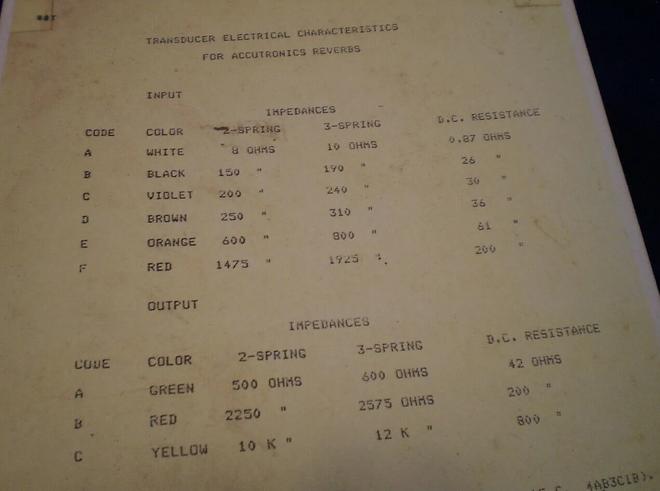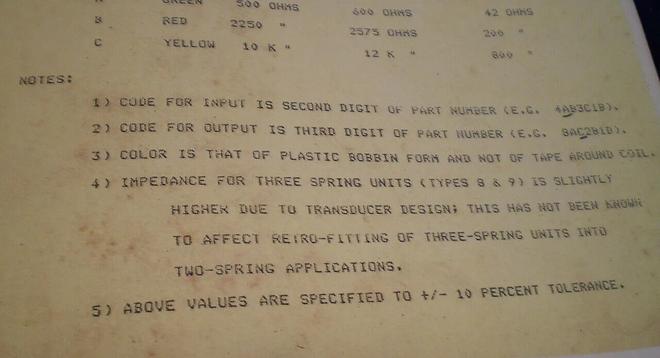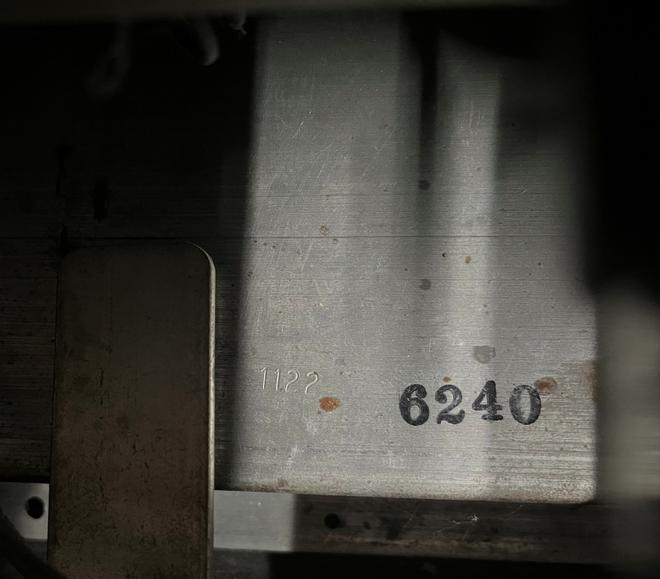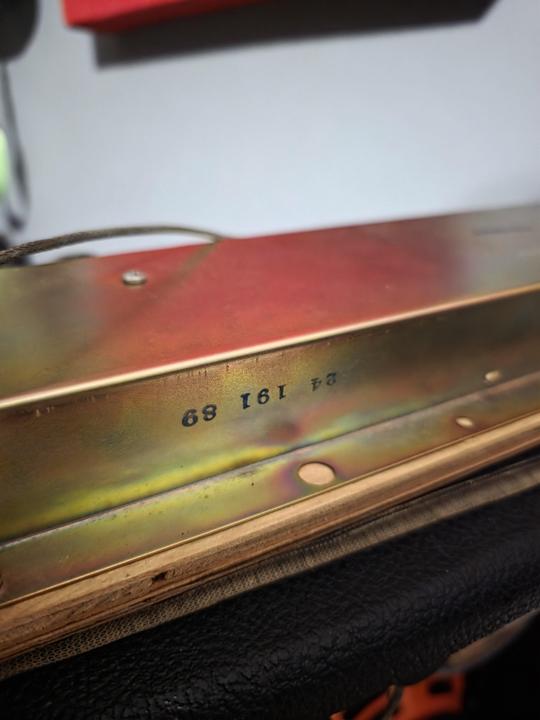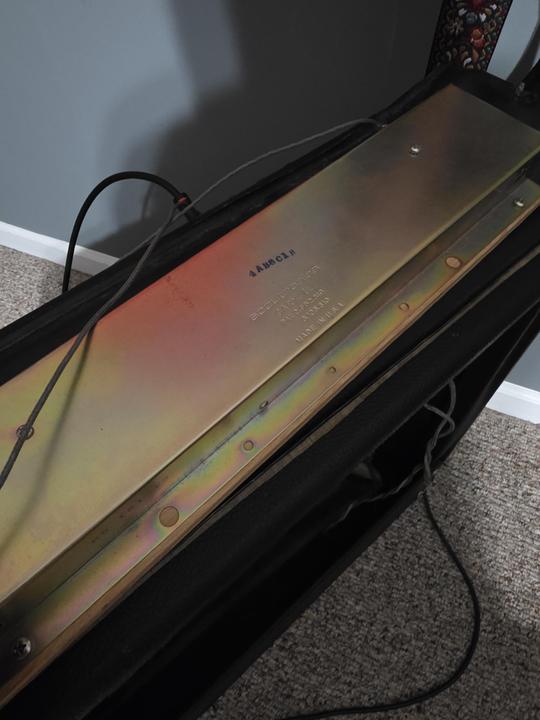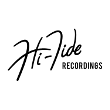The codes on the old 60's Gibbs pans look like a 'mess' and so far I haven't found any 'official' info that explains what all the codes stand for.
So, I've gone through hundreds of threads on various guitar forums and many online ads on dozens of 'second-hand items sites'/ CL's in various countries.
The aim was twofold:
1) just see what is out there as far as codes go
2) find info on the input and output impedance for each Gibbs code.
The final goal is obviously to find out what Gibbs pans can be used in a standard outboard reverb unit like a 6G15, Surfy Bear etc.
I've put my conclusion at the bottom as to which pans you can 'safely' buy for a 6G15 or Surfy Bear..
Some explanation on the abbreviations:
I = input impedance (DC measued)
O = output impedance (DC measured)
y = year
Sometimes I could only see the inside of the pan, sometimes only the outside, other times both.
Marked with a letter on the inside and Input/Output measured by the owner or seller:
These could be marked on the outside with additional codes as well or not.(I couldn't see, owner/seller didn't tell, or code on the outside was missing)
Between brackets is what various owners/sellers measured for in/out.
L (I:183 O:173) (I:170 O:170) (I:165 O:165) (I:178 O:188) (I:168 O:171)
C (I:135 O:135) (I:181 O:183) (I:200 O:200)
U (I:12 O:12 *suspicious, does not correspond to any known in/out,contradicts Accutronics info below)
R (I:? O:175) (I:1 O:169)
K (I:1,3 O:41) (I:1 O:44) (I:1,3 O:40)
4U (I:1,7 O:200)
4V (I:180 O:180) (I:166.2 O:166.7)
Marked with a code on the outside and Input/Output measured by the owner or seller:
These could be marked on the inside with additional codes as well or not. (I couldn't see, owner/seller didn't tell or code on the inside was missing)
AO-23580-10 (I:1 O:40) (I:1,3 O:41) (I:1,4 O:41,8)
AO-23580-11 (I:176 O:180.6) (I:165 O:165) (I:175 O:176) (I:168 O:171)
A0-23580-15 (I:1.3 O:174.2) (I:1,4 0:167)
Marked on the outside and inside but not measured:
I only listed distinct combinations, by which I mean: all the 15's had R inside and all the 11's had L inside. There were no 15's with any other code than R, idem dito for the others.
AO-23580-10 K
AO-23580-11 L
A0-23580-15 R
AO-23580-17 4U
AO-23580-18 4V
Info given by an Accutronics representative in response to an e-mail from a forum member:
The letters without corresponding Accutronics code are some that I found on photos (in ads, google images etc)
C = 4FB2A1C
D = 4AB1A1E
F = 4AB2A1C
G =
K = 4AA1C1C
M =
L = 4FB2B2C or 4FB1B1C
P =
R = 4AB????
U = 4AB1C1C
V = 4FB1C1E
Change of coding system
At some point in time, the codes changed from using "AO-23580-X" to "121-0000X".
Once I realised this happened, I went back to check the dates on those specific pans to see at what time they changed the coding system, which is why you see a year added here and not with the other pans above, which iirc were all 60's pans.
121-000048 (P inside) (I:1,2 O:176) (y:1970)
121-000049 (R inside) (I:1,1 O:171) (y:1969)
121-000022 (4U inside) (y:1969)
121-000051 (U inside) (I:1.1 O:172) (y:????) Additionally marked 1122-7044 on the outside
121-000051 (4U inside) (I:1.1,6 O:168) (y:1969) Additionally marked 1122-6911 on the outside
121-000052 (nothing inside) (I:176 O:176) (y:1971)
1121-00052 (C inside) (I:178 O:177 ) (y:????)
No system found:
Then there were pans with codes that didn't fit in any of the above coding systems:
VV3363 (I:1.3 O:173.4)
"Gibbs 984-003365 spring reverb unit 1968" (I:169 O:171)
VV2963 1122 6320 (F inside) (I:1.2 O: 171.6)
64063 (4U1 inside)
64063 (I:1.1 O: 172)
VC3130
(820209 inside) (I:183 O:187)
Decay time or length
One thing I noticed early on is that there was no code for decay, like the 3=long, 2=medium, 1=short in Accutronics pans.
So, while going through all those forum threads, I was also on the lookout for info about the decay time. Very little could be found but here's some:
Quoting various 'people':
As far as I remember, the early tanks were all made the same way with no specific mounting or other physical restrictions.
Some research led me to find out that the "R" stamp signifies "medium decay" with the correct Fender impedances.
The 63 Fender Standalone reverb comes with a Gibbs model F.
Typically Gibbs put this mark inside the reverb by the input connector, stamped in ink.
The Gibbs F unit is the same as an Accutronics model 4AB2A1C.
If you have the 63 Fender Standalone reissue then the reverb would be a 4AB3C1C
It seems the Gibbs and Accutronics pans from the 60s and EARLY 70s (like 70/71..) have shorter decay and a brighter, drippier drip.
The later ones seem to be a bit darker and longer decay. This is from a small sample of 5 or 6 tanks
Gibbs took over production from Hammond in 1964
Conclusion:
Whenever you see an old Gibbs pan on Ebay, CL, or whatever local second-hand items website you're on, there's always the question if it will work in your circuit.
Most sellers don't know how to measure the input/output impedance, don't want to or simply don't have a multimeter.
What's important for us (using 6G15, Surfy Bear or similar) is the input and output impedance.
By compiling the list above you know what type pan you'll get purely based on the Gibbs codes and markings.
We need a pan with a (DC) input resistance ranging between 0.8 and 2 Ohm and a (DC) output resistance ranging between 165 and 270 Ohm. Accutronics lists them as 0.8 Ohm and 200 Ohm.
If a Gibbs pan is marked with any of the codes below it will be a substitute for an Accutronics '4AB' pan:
Marked on the inside:
- P, R or 4U (decay unknown, probably medium)
- D or U (short decay)
- F (medium decay)
Marked on the outside (decay all unkown):
- A0-23580-15 (if marked inside it's always R)
- AO-23580-17 (if marked inside it's always 4U)
- 121-000022 (if marked inside it's always 4U)
- 121-000048 (if marked inside it's always P)
- 121-000049 (if marked inside it's always R)
- 121-000051 (marked U inside, short decay)
- 121-000051 (marked 4U inside, medium decay)
- VV3363
- VV2963 6320 (marked F inside)
- 64063 (if marked inside it's always 4U1)
The above will work as far as input / output impedance goes (which would be hard to modify yourself) but may not have the correct grounded/isolated code or mounting orientation code (both of which are very easy to modify to your needs)
So far it seems there are no 'long decay' Gibbs pans... those are the only ones I'm interested in. 
As a counter balance for all the times I mentioned Gibbs:

Hey J, Ive been building some Benson 200 clones for a client and bought 3 Gibbs tanks so far. Two sound great but the 3rd is kinda dull with short decay. These are all stamped L inside with blue ink and have input and output resistance of approx 170 each. Any idea as to which # corresponds to decay time? Thanks!
A good one is marked 1122-7045 984-003365
The dull one is marked 1122-6842 121-000017
was said to be from a late 60’s Fender amp. Original owner was unable to measure impedance so whenever it arrives I’m praying it’s compatible but like DannySnyder said, it’s a gamble. I can’t find any info on H stamps so who knows. But for the price listed, coming from a late 60’s fender let’s hope the gamble is worth it! If anyone has any info on a pretty much blank Gibbs reverb pan (code has disappeared with age) with an H stamp inside I would love to know what this thing is.















